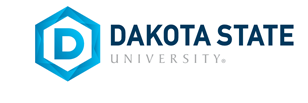Date of Award
Spring 3-2025
Document Type
Dissertation
Degree Name
Doctor of Philosophy in Information Systems (PhDIS)
First Advisor
Omar El-Gayar
Second Advisor
Cherie Noteboom
Third Advisor
Mark Hawkes
Abstract
Progress bars are used in many user interfaces to indicate user progress or wait time. Their main role is to set user expectations, and they can be auditory or visual. The use of visual progress bars is found in many applications, including games and is accepted as a strategy for gamifying user experiences. However, little research exists regarding the design of this tool, especially in how to leverage design elements to impact motivational affordance. Since progress bars are an element to gamify user interfaces, it benefits researchers and designers to have a deeper understanding of how to design the tool to increase motivation. Specifically, this research answers the following research question: What progress bar design principles improve motivational mechanics?
The research utilized the Design Science Research Methodology to create progress bar design principles based on elements related to motivational mechanics, motivational affordance, and user experience. Existing literature, focus groups, and user feedback were used to shape and refine these principles. The resultant artifact was evaluated through a review of a prototype incorporating the design principles using semi-structured interviews. The results are 11 design principles dealing with color, shape, text, placement, and animation of progress bars. The research provides design principles for progress bar design that concentrates on improving motivational mechanics in online adult learning environments.
Recommended Citation
Williams, Tania Shotts, "Principles For the Design of Visual Progress Bars to Improve Motivation in Online Learning" (2025). Masters Theses & Doctoral Dissertations. 497.
https://scholar.dsu.edu/theses/497

